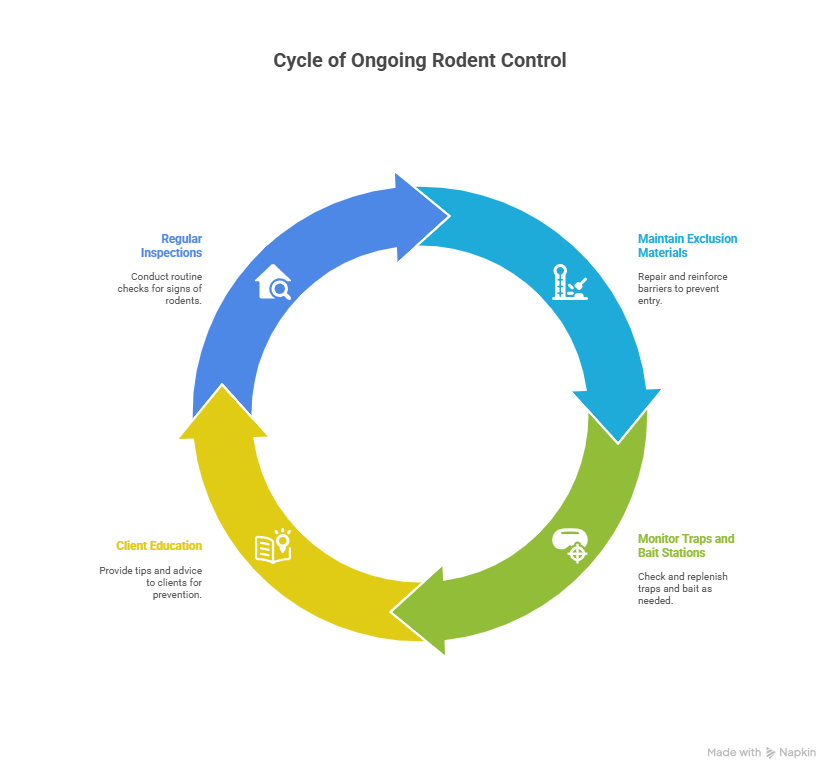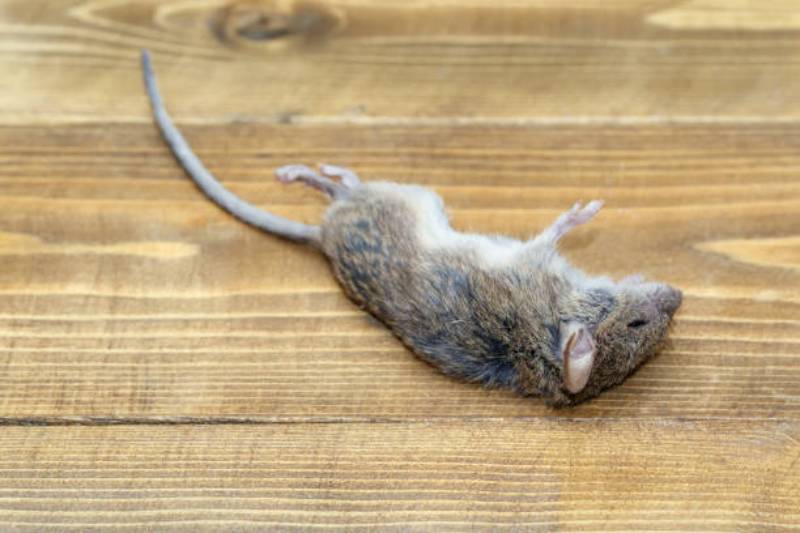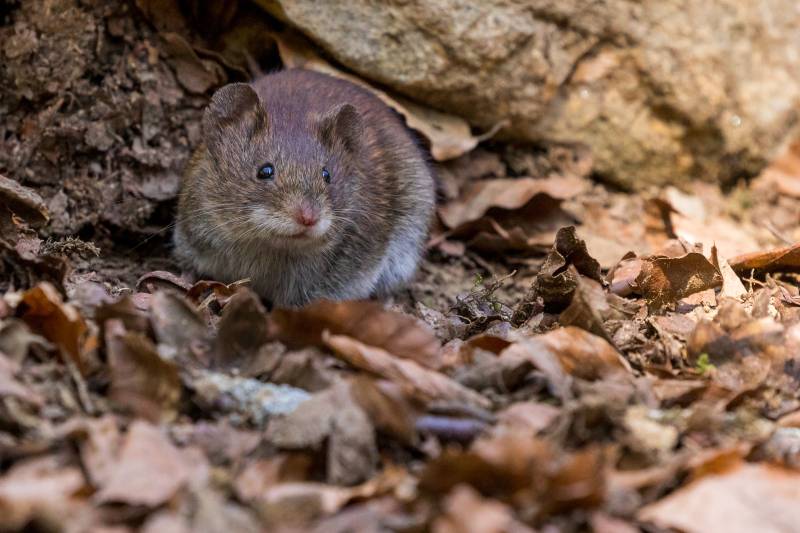The Rising Demand for Eco-Friendly Rodent Solutions
Rodents aren’t just a nuisance in Chicago, they’re a public health concern. From the alleys of Wicker Park to the basements in Bronzeville, rats and mice have become seasoned urban dwellers. But in today’s environmentally conscious climate, harsh chemicals and widespread poisoning campaigns are falling out of favor. Chicago homeowners and businesses are asking a critical question: How do we control rodents without harming the environment?
The answer lies in green pest control techniques, science-backed, humane, and environmentally friendly strategies that work with nature, not against it. Whether you’re in a historic greystone or a modern condo, there are proven methods that deliver results without sacrificing your family’s health or the city’s fragile urban ecosystem.
Why Go Green with Rodent Control in Chicago?
Pesticide exposure isn’t just risky for pests, it can affect kids, pets, wildlife, and even drinking water. In fact, the Illinois Department of Public Health has repeatedly emphasized the importance of minimizing chemical usage, especially in densely populated urban areas. Add to that Chicago’s aging infrastructure, with its hidden crawlspaces and forgotten utility tunnels, and you’ve got a recipe for recurring infestations, unless you approach them smartly.
That’s where green pest control techniques shine. They’re designed to:
- Reduce rodent access and hiding spots
- Disrupt breeding cycles
- Keep toxins out of your home and soil
- Focus on long-term prevention instead of short-term extermination
Let’s break down what actually works in today’s Chicago rodent battles.
Integrated Pest Management: The Gold Standard in Green Control
What Is IPM?
At the heart of green pest control is Integrated Pest Management (IPM). This isn’t one technique, it’s a comprehensive framework that uses environmental data, rodent behavior insights, and targeted action plans to minimize harm and maximize control.
Rather than blasting your attic with poison, IPM asks: Why are the rodents here? Where did they come from? What can we change to keep them out?
How IPM Works
In practice, IPM includes:
- Inspection and monitoring: Professionals assess your property from top to bottom, identifying risk zones like open vents, loose siding, and food access points.
- Exclusion work: Rodents don’t break through walls; they exploit weak spots. IPM emphasizes sealing entry points with durable materials.
- Behavior-based control: Traps are placed where rodents are most likely to pass, not randomly. This approach maximizes efficiency and minimizes unnecessary traps or bait.
- Minimal, strategic pesticide use: If chemicals are needed, they’re used sparingly, precisely, and safely. Often, they aren’t needed at all.
Midwest Pest Solutions has made IPM a cornerstone of its rodent control services, combining exclusion work, sanitation plans, and custom monitoring in a way that prioritizes environmental safety. Their approach is tailored specifically to Chicago’s rodent-prone neighborhoods.
Sealing the Deal: Why Exclusion Is Everything
Stop the Infestation Before It Starts
Let’s get one thing straight, you can’t poison your way out of a rodent problem. The most effective and environmentally safe method is to keep rodents from entering in the first place.
That’s where exclusion comes in.
What Does Exclusion Involve?
Exclusion is the process of finding and sealing all entry points rodents may use to get into your home or building. And in an older city like Chicago, that list can get long, think crumbling foundation gaps, unsealed utility lines, busted window screens, or even air conditioner conduits.
Professional exclusion typically uses:
- Steel wool or copper mesh: Rodents can’t chew through them.
- Caulking or expandable foam: For sealing cracks and gaps.
- Hardware cloth or wire mesh: Over vents or crawlspace entries.
- Door sweeps and weather stripping: Keeps rodents out from under doors.
This method is highly effective and entirely chemical-free. According to Green Rodent Restoration, exclusion work alone can reduce rodent intrusion by over 80% in urban homes. It’s a labor-intensive process, but once it’s done, the results are long-lasting, and don’t require reapplication like sprays or poisons.
Sanitation: The Silent Hero of Green Rodent Control
Clean Homes Are Harder to Invade
You can seal every crack, but if your pantry is a free buffet, rodents will find a way. Sanitation is a non-negotiable element of green pest management. That doesn’t just mean tidying up, it means eliminating the environmental conditions that attract rodents.
Essential Sanitation Steps
Here are the sanitation practices that work best:
- Eliminate food sources: Store dry goods in sealed containers. Don’t leave pet food out overnight. Regularly clean under appliances.
- Manage trash properly: Use heavy-duty lids on trash bins and avoid letting garbage pile up in alleyways or garages.
- Fix leaks and standing water: Rodents need water to survive. Leaky pipes and standing puddles are invitations.
- Clear clutter: Cardboard, newspapers, and old clothes make great nesting materials. Declutter storage areas frequently.
In neighborhoods like Logan Square and Humboldt Park, older homes often have basement and attic spaces with years of buildup. Sanitation here becomes not just a cleaning job, it’s a rodent prevention strategy.
Habitat Modification Outside the Home
Your Landscaping Might Be the Problem
Even the greenest lawn can be a rodent’s playground if it provides cover and access. Many Chicago homes with backyards, gardens, or shared green spaces unknowingly contribute to rodent infestations through landscaping oversights.
Simple landscape modifications make a big difference:
- Trim bushes and tree branches away from the home’s exterior.
- Avoid dense ground cover near the house foundation.
- Remove debris and yard waste that could serve as shelter.
- Store firewood and compost bins at least 20 feet from the house.
These efforts not only reduce rodent harborage but also align with broader green practices like reducing pesticide runoff and promoting native plant species.
Midwest Pest Solutions includes these tips in their broader pest control services, helping homeowners in Chicago tackle both the visible and invisible elements of rodent attraction.
Natural Repellents: Do They Actually Work?
Essential Oils: Not Just for Aromatherapy
If you’ve been on TikTok or Pinterest lately, you’ve probably seen people raving about peppermint oil as a rodent repellent. And while it’s not a silver bullet, there is truth to the hype.
Essential oils like:
- Peppermint
- Lavender
- Eucalyptus
…can irritate a rodent’s nose and deter them from nesting or passing through treated areas. These oils can be diluted and sprayed along baseboards, under sinks, near entry points, or soaked into cotton balls in attics and crawlspaces.
While not as potent as traditional repellents, they offer a safe, natural option for households with pets or kids, and they smell better, too.
Enzyme-Based Cleaners
Another innovative green solution involves enzyme cleaners that break down the pheromones rodents use to mark territory. These cleaners remove scent trails that would otherwise attract more pests. Plus, they’re biodegradable and non-toxic, making them a great eco-conscious swap for bleach or ammonia-based products.
Humane Trapping: Ethical, Effective, and Green
The Shift Toward Kindness in Pest Control
Chicago residents are increasingly choosing humane rodent trapping over lethal options. It’s not just an ethical choice, it’s also an effective long-term solution when combined with exclusion and sanitation.
How Humane Trapping Works
Live traps are designed to capture rodents without harm. Once caught, the rodents are released in remote, non-residential areas, ideally where they won’t be a problem again. These traps are usually placed:
- Along known rodent runways (walls, pipes, attics)
- Near food sources, but not directly next to them
- Inside crawl spaces, garages, or under sinks
According to the National Wildlife Rehabilitators Association, humane trapping should always be followed by preventative measures, otherwise, the problem will just come back.
Professionals at Midwest Pest Solutions incorporate humane trapping in neighborhoods like Andersonville, where historic buildings often attract unwanted furry tenants.
Snap Traps vs. Rodenticides: Why Eco Wins
The Problem with Poison
While rodenticides can be effective, they come with serious downsides. These toxins can:
- Harm pets, children, or non-target wildlife
- Contaminate water supplies if not disposed of properly
- Lead to secondary poisoning of predators like hawks, owls, and coyotes
The Environmental Protection Agency (EPA) warns that misuse of rodenticides has ecological consequences far beyond the walls of your home.
Mechanical Traps: A Safer Alternative
Snap and mechanical traps provide:
- Instant, targeted elimination
- No chemicals or residue
- Safe use around pets and children (when placed correctly)
These traps are often reusable and highly effective when used as part of an Integrated Pest Management (IPM) plan. And unlike poisons, they provide visual proof that the rodent has been removed.
Midwest Pest Solutions often uses these tools in conjunction with their eco-conscious strategies to tackle larger infestations in commercial and multi-unit residential buildings across Chicago.
Ultrasonic Devices: Do They Work?
The Science Behind the Sound
You’ve probably seen them: little plastic gadgets that plug into the wall and claim to drive out rodents with ultrasonic frequencies. They’re marketed as green, safe, and effortless.
But do they work?
Research from the University of Nebraska–Lincoln’s Institute of Agriculture and Natural Resources suggests that ultrasonic devices may have short-term effects on rodent behavior, but rodents quickly adapt. Their use may deter initial activity, but they are not a standalone solution.
That said, when used with exclusion, sanitation, and trapping, they can contribute to a rodent-unfriendly environment, particularly in garages, attics, and storage units.
Rodent Birth Control: Chicago’s New Frontier?
Yes, This Is Real
It might sound like science fiction, but rodent fertility control is becoming a reality in cities like Chicago. One product gaining attention is ContraPest, a fertility bait designed to reduce rodent reproduction without killing them.
When used as part of a larger green pest control plan, fertility control helps:
- Decrease rodent populations gradually
- Avoid poison-related ecological damage
- Maintain long-term rodent management
A pilot study published by the National Institutes of Health (NIH) supports fertility-based solutions as part of integrated urban rodent control programs.
Some neighborhoods in Chicago have begun exploring fertility control alongside more traditional IPM practices, and local companies like Midwest Pest Solutions are keeping a close eye on the results.


The Importance of Ongoing Monitoring and Maintenance
Rodent Control Is Not One and Done
Even after sealing every crack, cleaning every cupboard, and trapping the last mouse, you’re not done. Rodent control, especially green rodent control, is an ongoing process.
That’s why professional pest control services schedule:
- Regular inspections
- Maintenance on exclusion materials
- Monitoring of traps and bait stations
- Client education and prevention tips
According to the Illinois Department of Public Health, regular assessments are crucial in multi-family housing, where shared walls and basements make reinfestation more likely.
Midwest Pest Solutions builds long-term maintenance into their residential and commercial rodent programs, ensuring that customers stay protected season after season.
Green Solutions for Every Type of Chicago Property
Apartments, Historic Homes, and Restaurants
Chicago’s architecture is as diverse as its neighborhoods. From Lincoln Park’s mansions to South Loop’s high-rises and Pilsen’s multi-unit flats, rodent control challenges vary by structure type.
Here’s how green pest control adapts:
- Historic homes: Often riddled with entry points due to aging woodwork or foundations. Exclusion and live trapping are key here.
- Apartments and condos: Require building-wide strategies, especially in older or poorly sealed structures. IPM combined with tenant education helps prevent spread.
- Restaurants and storefronts: Benefit from frequent inspections, mechanical traps, and enzyme-based cleaners that eliminate food-based attractants.
Pest control companies like Midwest Pest Solutions have experience across this spectrum and deliver tailored, environmentally safe programs that suit each building’s unique layout and vulnerabilities.
DIY Green Rodent Control Tips for Chicago Homeowners
Small Habits, Big Impact
Not everyone needs a full pest control overhaul right away. For many Chicagoans, starting with simple, eco-conscious steps can prevent a minor rodent issue from becoming a full-blown infestation.
Here’s what homeowners and renters alike can do:
- Inspect your home monthly for signs of chewing, droppings, or entry points.
- Store grains and dry goods in glass or thick plastic containers, not cardboard or flimsy packaging.
- Avoid overwatering your lawn or garden, especially near your foundation.
- Install door sweeps and seal gaps around baseboards, pipes, and attic openings.
- Use natural deterrents like peppermint oil along entry points and inside cabinets.
You can also download free prevention checklists from organizations like the Centers for Disease Control and Prevention (CDC), which offers guidance on eco-safe ways to reduce rodent access and risk of disease exposure.
Busting Common Myths About Green Pest Control
Myth 1: “Natural means less effective”
This is one of the most common misconceptions. In reality, green pest control techniques are often more effective long term because they focus on eliminating the root cause, not just masking symptoms. Sealing entry points and removing food sources work far better than relying on endless poison cycles.
Myth 2: “You can do it all yourself”
While DIY strategies can help, rodent infestations, especially in urban environments like Chicago, require professional inspection and targeted treatments. Companies like Midwest Pest Solutions bring years of local expertise and access to commercial-grade, eco-friendly tools.
Myth 3: “Ultrasonic devices are foolproof”
As mentioned in Section 2, these can help in small, confined spaces but are not a stand-alone solution. Combine them with physical exclusion, traps, and sanitation for best results.


The Future of Rodent Control in Chicago
Urban Ecology Meets Innovation
Chicago is a city that adapts, from its bold architecture to its evolving approach to public health and sustainability. The future of rodent control here will likely focus on:
- Wider use of fertility control technologies like ContraPest
- City-sponsored exclusion and monitoring programs
- Public health education campaigns on safe pest prevention
- Collaboration between pest experts and urban planners to design rodent-resistant infrastructure
Organizations like the Chicago Department of Public Health already provide robust rodent reporting systems and street-level baiting programs, but more eco-friendly options are making their way into the toolbox.
FAQs: Green Rodent Control in Chicago
How do I know if green pest control is working?
You’ll see a steady reduction in rodent activity, fewer droppings, chew marks, and sightings. Professionals may also use monitoring stations to track results over time.
Is green pest control safe for pets and kids?
Yes. Green methods focus on non-toxic, mechanical, and natural deterrents, making them far safer than rodenticides. Still, traps should always be placed out of reach.
Can green pest control be used in commercial properties?
Absolutely. Many Chicago businesses, from cafes in Lakeview to offices in the Loop, now use eco-conscious pest control providers. Midwest Pest Solutions offers commercial green services designed to meet both health codes and environmental goals.
Do ultrasonic repellents actually work?
They can help temporarily, but should never replace traps, exclusion, or professional treatments. Think of them as a bonus layer, not a standalone fix.
Is rodent birth control available to the public?
Currently, most fertility control products are administered by professionals in controlled environments. But the science is evolving, and wider access may be on the horizon.
Final Thoughts: Chicago Deserves a Smarter, Greener Approach
The days of casual poison pellets tossed into a basement corner are (thankfully) fading. As Chicago faces rising urban rodent challenges, the solution isn’t more toxins, it’s smarter strategy.
With the help of science-backed frameworks like Integrated Pest Management, along with eco-safe tools, structural exclusion, and community education, we can build a city that’s healthier for humans, and a whole lot less welcoming to rodents.If you’re ready to switch to a safer, cleaner rodent control strategy, connect with a local expert like Midwest Pest Solutions. They’re leading the way in sustainable pest management across the Chicagoland area, one attic and alley at a time.

